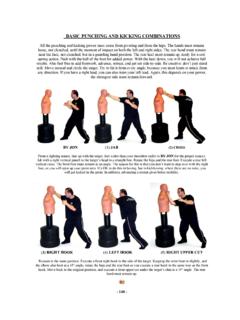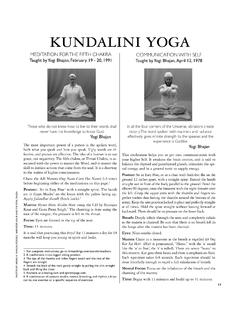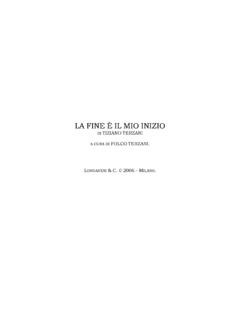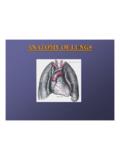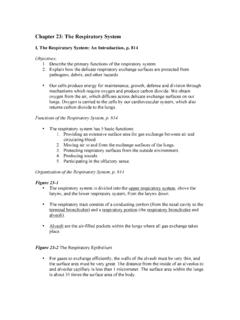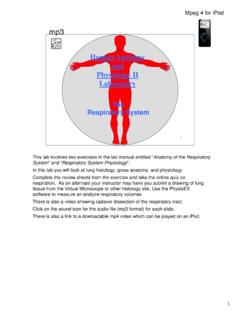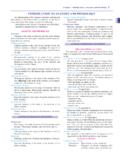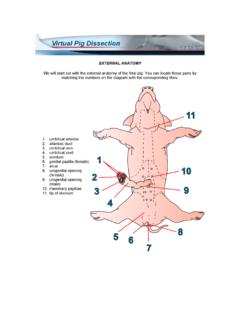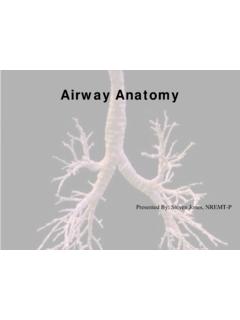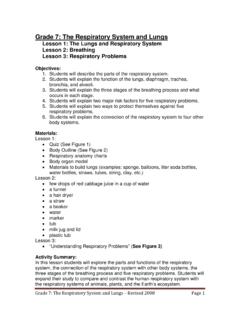Transcription of PART FOUR Yogic & Functional Western Anatomy - SBSS.it
1 PART FOUR. Yogic & Functional Western Anatomy Yogic & Functional Western Anatomy Introduction AS KUNDALINI YOGA TEACHERS WE NEED A BASIC ORIENTATION TO THE BODY. We need to know its fundamental structures and their primary systems and functions. Anyone who teaches exercise and physical awareness needs to understand the tool that we use the body. As kundalini yogis we recognize the subtle Anatomy such as the meridians and chakras along with the physi- cal structures recognized in medicine. We are aware of the subtle Anatomy of energy and consciousness as well as the gross Anatomy we learn in standard textbooks like Gray's Anatomy . By understanding these essentials we gain a deeper appreciation of the power and design of the human body and the exquisite flow of energy in each kundalini kriya.
2 Kundalini Yoga kriyas work on the total being, bring- ing natural balance to the various systems as they interact with one another. Kriyas re-pattern the body sys- tems, systematically breaking down energy blocks and simultaneously releasing the mind. This brings a deep sense of the infinite, and establishes our connection to our soul. Kundalini Yoga recognizes the presence of the Grace of God in the whole process. We call Kundalini Yoga a sacred science. Please note that in this Western Anatomy section the suggestions of yoga sets and exercises specific to each area are only examples. Keep in mind that the comments accompanying the Kundalini Yoga kriyas are ones that Yogi Bhajan gave while teaching or else brief elaborations of basic Anatomy either gross or subtle.
3 They are intended to raise your awareness, give you interesting teaching comments, as well as motivation to keep up in the exercises or habits. The few examples in this chapter are not meant to limit you but rather to simply steer you in the right direc- tion. Please use the vast resource of sets, kriyas, exercises, and meditations gathered over the years in all the many valuable Kundalini Yoga manuals. 156 KRI INTERNATIONAL TEACHERTRAINING MANUAL LEVEL 1 COPYRIGHT YOGIBHAJAN 2003. CHAPTER 13 Functional Western Anatomy CHAPTER 13. Functional Western Anatomy "What is Kundalini? The energy This chapter includes .. of the glandular system com- Circulatory System 158. bines with the nervous system to Lymphatic System 159. become more sensitive so that Respiratory System 160.
4 The totality of the brain perceives Digestive System 162. Endocrine System 164. signals and interprets them." Nervous System 166. YOGI BHAJAN Musculo-Skeletal System 168. Spinal Biomechanics 170. Caveats & Cautions for the Spine & Neck Immune System 171. Genito-urinary System 172. COPYRIGHT YOGIBHAJAN 2003 KRI INTERNATIONAL TEACHERTRAINING MANUALLEVEL 1 157 . Functional Western Anatomy CHAPTER 13. Circulatory System Bad posture. Nicotine, alcohol, and salt consumption. Ethnic or racial predispositions. For example, African Organs & Components Americans tend to have a disproportionate incidence of high Heart Capillaries blood pressure and other coronary risk factors. Arteries Veins Stress-induced high blood pressure, which usually has its source in mental, emotional, or physical over stimulation of Basic Organ Structure & Function the sympathetic nervous system and adrenal glands.
5 This over Heart: Starting at the heart, blood circulates from the right atrium stimulation causes increased heart rate and strength of con- to the right ventricle, to the lungs , and back to the left atrium traction, along with increased resistance to blood flow at the and left ventricle of the heart. From the left ventricle, the blood is extremities because of muscle tension around the blood vessels. pumped to the ar terial system throughout the rest of the body and back through the venous system to the right atrium. Some Good Foods & Nutrients Wheat germ, alfalfa, buckwheat, celery, lecithin, green leafy veg- Arteries: etables, nuts, peas, beans, low-fat milk products, cayenne pep- Carry blood from the heart to the arterioles (small arteries).
6 Per, oranges, lemons, strawberries, calcium, Vitamin E, B vita- and capillaries (minute vessels that connect arterioles and mins, selenium, ginseng, oat bran and garlic (which lowers small veins). blood pressure). Have a muscular layer that is responsible for keeping blood pressure balanced. Contraction or relaxation of this muscular How Yoga Helps layer either reduces or expands the volume in the artery. Relaxation with yoga helps reduce the impact of stress hormones such as cortisol and adrenaline. Experiments show meditators Capillaries: have increased cortisol production under stress, but the level is Allow nutrients, gasses, and waste products to migrate quickly reduced compared to non-meditators, thus they do not into and out of the circulatory system; the walls are very thin, accumulate long term damage and lose the chemical responsive- and the total surface area of the capillary bed is large, ness of the body to changing demands from the environment.
7 Providing a massive surface for nutrient exchange. Pranayam and aerobic exercise increase oxygen supply in the Transport nutrients and oxygen to tissues. blood. Pick up waste products and carbon dioxide. Yoga promotes weight reduction through increased metabolism. Veins: Return blood from capillaries and venules (small veins) to Yoga strengthens the heart muscles. the heart. Yoga increases the efficiency of blood flow by increasing the Relationship to Other Systems BLOOD CIRCULATION. The circulatory system delivers nutrients and oxygen to all organs. It also collects toxins for delivery to the Jugular vein Carolid Artery lungs , liver, and kidneys for excretion. Aortic Arch Aorta Negative Influences & Risk Factors Interior Vena Diet high in cholesterol and fats, especially animal Cava fats, which contain free radicals (molecules with a negative charge.)
8 Free radicals in the circulation can damage the cellular walls of blood vessels, which is the beginning of ar teriosclerosis, the process in which scar tissue and cholesterol are deposited Femoral Artery around the site of injury. Antioxidant vitamins help Femoral neutralize the negative charge and prevent injury to Vein blood vessel walls. Lack of activity, which is the number one cause of illness in developed countries. THE HEART. Obesity. 158 KRI INTERNATIONAL TEACHERTRAINING MANUALLEVEL 1 COPYRIGHT YOGIBHAJAN 2003. CHAPTER 13 Functional Western Anatomy number of small peripheral blood vessels. The volume of the cir- Lymphatic System culatory system increases, and so does the efficiency of getting nutrition and oxygen to the peripheral tissues and waste prod- Organs & Components ucts from the tissues.
9 One of the mechanisms for this effect Lymph Ducts & Nodes Bone Marrow seems to be an increase in nitric oxide, which helps regulate Tonsils Thymus peripheral blood flow at the local cellular level. This mechanism Spleen is stimulated through exercise and meditation, especially when consciously paced breathing is used. Basic Organ Structure & Function Parts of the lymphatic system are located throughout the Suggested Yoga Exercises & Other Support body, with concentrations of lymph nodes in the groin, Many of the more aerobic sets, such as Abdominal armpits, and neck. Strengthening (Sadhana Guidelines, p. 57.). The primary function is to return fluids from the peripheral Heart Center sets (Sadhana Guidelines, p. 65 & 67.). tissues back to the circulatory system.
10 Relaxing tension, opening circulation, and moderating blood Bodily fluids are filtered and bacteria are killed at the lymph pressure: Left and alternate nostril breathing with deep, slow nodes. breaths (Sadhana Guidelines, p. 81.). Contraction of the muscles pumps lymph through the lymph Sitali and Sitkari pranayam (Sadhana Guidelines, p. 79.). ducts. Breath of Fire. The bone mar row, blood vessel walls, and spleen manufac- One-minute breath: 20 seconds inhalation, 20 seconds hold ture, grow, and store lymphocytes (white blood cells), which the breath, 20 seconds exhalation. help the body defend against infection. Arm, torso, and leg lift exercises, such as Ego Eradicator and cross-crawl exercises. Relationship to Other Systems Spinal Twists, which assist the return of blood and lymph to The lymphatic system facilitates the movement of salts, water, the heart and assist in the elimination of toxins.




